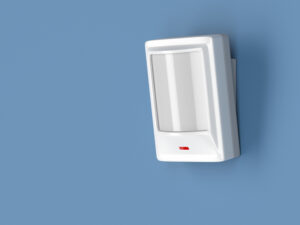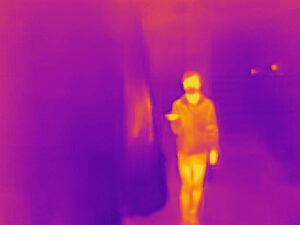Improving and utilising a workplace is at the top of every business’s priority. With the rise in energy bills and the shift in work patterns, it is essential to understand where you can optimise the use of your available space. Over the past few years, there has been an increase in flexible work life with employers offering more flexitime and working from home options, but what effect does this have on the office still costing overheads and utility bills?
How Can Occupancy Monitoring Help a Business?
Empty desks mean wasted space, and since the pandemic of 2020, many office-based businesses have adapted their ability to offer remote work, providing a better work-life balance and resulting in satisfied employees and a more productive workforce. However, while keeping track of a workforce may be feasible for smaller companies, it may challenge those with larger departments.
Workplace occupancy sensors allow you to track the working patterns of your staff, allowing employers to respond to their varying needs and the needs of the business. The typical office space utilisation is just 39%, some offices have too much space, whilst others require more, being able to monitor your own business situation is essential if you offer to hot desk or have staff who flit between desk and warehouses.
Making valid occupancy assessments of your office can assist in reducing energy, wasted space, and lowering overhead costs of bills. For example, if you manage a wholesale facility, which requires office workers that also need to pick stock in the warehouse, evaluating how long they spend at their desks could help you decide if it is feasible to share with another staff member. Alternatively, if you have a sizeable office-based business which offers flexible working from home options, assessing how often desks are used could assist you in addressing quieter days. It could also allow you to rent desks to outside sources, providing additional income for your business.
How Do Motion Sensors Work?
Motion sensors use infrared energy, radar waves or other methods to detect movement within a designated space or area. The emitter will pulse energy into a site, and when an object disrupts the set distance and area, the echo-response is shortened. This will activate the sensor to pass the data onto the relevant receiver to take action, whether this is a data collection point or instruct other equipment. Another type of motion sensor is a beam and photoelectric. These rely on a focused beam of energy transmitting between a sensor and an emitter. If an object were to come between the travelling energy beam, breaking it, the sensor would trigger a reaction and relay the data.
What Are Motion Sensors Used for?
Motion sensors are usually applied in devices such as burglar alarms, security lights, automated doors and, most recently, video doorbells. These applications rely on instant and individual situations of change to trigger a reaction within another system component, such as turning a light on or triggering an alarm.
Whilst they provide enough data for other functions, they often provide false triggers, or if the set perimeters are not calibrated correctly, they do not trigger at all. So, using these for occupancy monitoring could give false readings and incorrect real-time data. In addition, beam sensors would require someone to be sat at an exact position to break the transmitted energy beam for the sensor to activate.
How Do Occupancy Sensors Work?
Whilst motion and occupancy sensors offer similar functions; they operate in different ways. The occupancy sensor also uses infrared energy pulses, but instead of detecting movement within the area, they identify the presence of a person or being. These sensors offer the ability to pre-set weight and size parameters, preventing unnecessary activation and triggering alarms for inefficient reasons.
For example, if you chose to employ motion detectors for assessing occupancy, a simple moving of a chair would trigger a response, providing incorrect data and would offer false data management.
Occupancy Sensors vs Motion Sensors
At Automated Data Management, our bespoke GeneSysOM Systems use Occupancy sensors for occupancy monitoring as opposed to motion sensors. This is because occupancy sensors provide a more accurate reading of the situation. In contrast, the motion detectors will detect generic movement within an area, which could be from an inanimate object triggering the sensor. Alternatively, if someone remains still for extended periods, it will not detect movement and read incorrectly.
Who Can Benefit from Occupancy Sensors?
There are many sectors and industries which will benefit from assessing the occupancy of a space. For example, our occupancy monitoring systems within the hospitality sector can help quickly assess the utilisation of rooms and even tables, helping to address when days and periods may be quieter and when less staff are required. In addition, with wireless remote monitoring systems, as a business manager, you can access the data from anywhere in the world, offering complete flexibility in data management.
Our systems can also assist the following sectors;
Healthcare – From monitoring the consultation room occupancy to bed occupancy and surgery room occupancy, our systems will help you manage these spaces efficiently.
Administration – Office-based workspaces are the most common use for occupancy monitoring, especially as companies develop more flexible job roles.
Retail – Having a large retail facility with changing rooms may be a challenge to regulate. With occupancy monitoring, you can ensure efficient control and easily direct customers into free cubicles.
Each business operates in many ways, and our bespoke remote monitoring systems are designed around your needs, however unique they are. Our occupancy monitoring systems can be installed anywhere, in any space. For more information on how our systems can improve the efficiency and operations of your workplace, you can enquire online, and we will aim to get back to you as soon as possible.
















